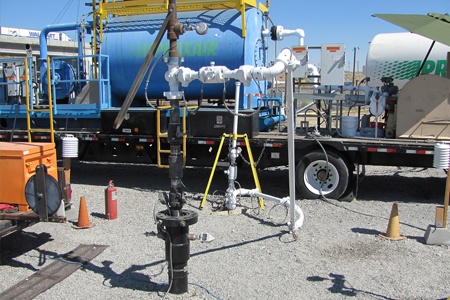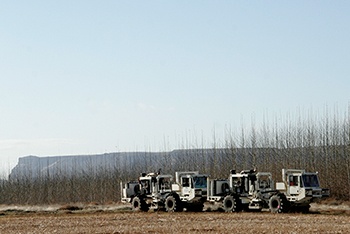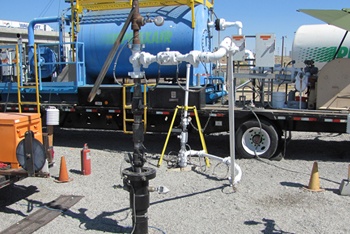Basalt Pilot Project
Introduction
 Continental flood basalts are extensive geologic features that formed from lava flows millions of years ago. Due to their vast presence in North America and throughout the world, scientists are increasingly interested in flood basalts as potential sites for the permanent underground storage of carbon dioxide (CO2). In an effort to characterize and assess the geologic storage potential of the Big Sky region, BSCSP is conducting a small-scale field project near Wallula, Washington. The project's main objectives include:
Continental flood basalts are extensive geologic features that formed from lava flows millions of years ago. Due to their vast presence in North America and throughout the world, scientists are increasingly interested in flood basalts as potential sites for the permanent underground storage of carbon dioxide (CO2). In an effort to characterize and assess the geologic storage potential of the Big Sky region, BSCSP is conducting a small-scale field project near Wallula, Washington. The project's main objectives include:
- Conduct geological site characterization activities to ensure the site is a safe location to inject CO2.
- Participate in public outreach activities in an effort to engage local stakeholders in the process.
- Address and comply with all local, state, and federal permitting procedures.
- Inject 1,000 tons of CO2 into the underground basalt formation.
The injection phase will test the behavior and chemical reactions that take place between the injected CO2 and surrounding basalt environment. The study is the first field demonstration of its kind in the United States, and results will provide scientists with crucial information on the potential for basalt formations to provide long-term storage of CO2 emissions.



